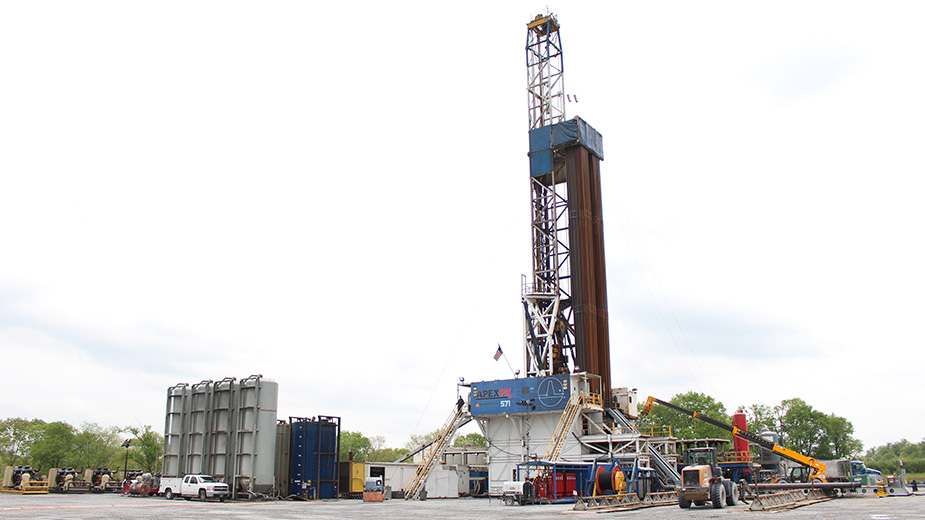Study Finds No Groundwater Contamination from Fracking
Editor’s Note: Story submitted by Jackie Stewart from Energy in Depth, an industry trade group.
YOUNGSTOWN, Ohio — The first ever and award winning Utica Shale study to examine the root source of methane linked to fracking has finally been published in a scientific journal.
The long awaited multi-year University of Cincinnati groundwater study that found no impacts from fracking was finally published last week in the peer-reviewed journal Environmental Monitoring Assessment – more than two years after researchers first announced its findings. The study was also blessed by the Ohio Environmental Council in 2014 as its recipient for the “Science and Community Award.”
Notably, the study’s topline conclusions echo comments made by the report’s lead researcher and a master thesis that was uncovered by Energy in Depth two years ago stating:
“We found no relationship between methane concentration or source in groundwater and proximity to active gas well sites.”
“… our data do not indicate any intrusion of high conductivity fracking fluids as the number of fracking wells increased in the region.”
The study further highlights how incredibly important the publication of the findings are, given the fact that it truly is a first-of-its-kind. It states: “[O]ur study is the first to characterize CH4 sources in groundwater in the Utica Shale drilling region of Ohio, and is one of only a handful of time series studies of methane concentration and associated isotopic composition in an oil and gas extraction area.”
While this study is indeed a first for Ohio, this is just one of more than two dozen studies showing that fracking is not a major threat to groundwater, and as Energy in Depth has previously covered, the report’s now-confirmed topline conclusion is all-the-more noteworthy considering it was partially funded and orchestrated by anti-fracking groups.
In fact, the study received over 18 percent of its funding from the anti-fracking Deer Creek Foundation. In other words, it should come as no surprise that the hypothesis was not supported by the facts of the data.
Other findings the researchers revealed in the study include:
“We hypothesized that CH4 [methane] concentration would increase as the number of shale gas wells in the area increased, with the isotopic composition of CH4 reflecting an increasingly fossil fuel derived natural gas source, and that pH of groundwater would decrease and electrical conductivity would increase due to the presence of acidic, salty hydraulic fracturing fluids in groundwater. We also predicted that groundwater wells located within 1 km of active shale gas wells would have elevated levels of dissolved CH4 with isotopic ratios reflecting a natural gas source, and that groundwater within this ‘active zone’ would have decreased pH and increased electrical conductivity.”
But the data collected from 25 water wells in Carroll, Harrison, Stark, Belmont and Columbiana counties between 2012 and 2015 simply did not support that hypothesis, the study found.
“Contrary to our hypothesis,” the research concludes, “we did not see an increase in CH4 concentration or change in isotopic composition of CH4 in groundwater in regularly monitored wells over the study period, despite a large increase in the number of producing shale gas wells in our study area. In fact, we saw a decrease in CH4 concentration in some of our regularly monitored wells, although the number of samples in our time series is relatively small. The low numbers of significant correlations indicate there may be natural variability in concentrations of biogenic CH4 in groundwater in our study area (contrary to our expectation).”
As Energy in Depth has highlighted numerous times, it was at an anti-fracking Carroll Concerned Citizens meeting more than two years ago that lead researcher and University of Cincinnati professor Amy Townsend-Small announced the study’s findings.
“I’m really sad to say this but some of our funders, the groups that had given us funding in the past, were a little disappointed in our results,” she said. “They feel that fracking is scary and so they were hoping our data could point to a reason to ban it.”
The study notes that just 115 drilling permits had been issued in Ohio when the study began in January 2012, and that 1,600 permits had been issued by the study’s conclusion in February 2015. Most of the 180 total samples were collected in Carroll County, which has emerged as the most-drilled Ohio county, seeing shale well counts increase from just three in late 2011 to 354 in 2015, according to the study’s master thesis.
The fact that the samples collected on a “voluntary” basis and based on “landowner interest” — translation: from landowners that were involved with Carroll Concerned Citizens or sympathetic to their efforts — further validates the study’s conclusion. And the findings really couldn’t be clearer: there was no evidence of groundwater contamination attributable to natural gas development in the study area.
SOURCE: Energy in Depth, a pro-industry trade group.
Copyright 2024 The Business Journal, Youngstown, Ohio.


